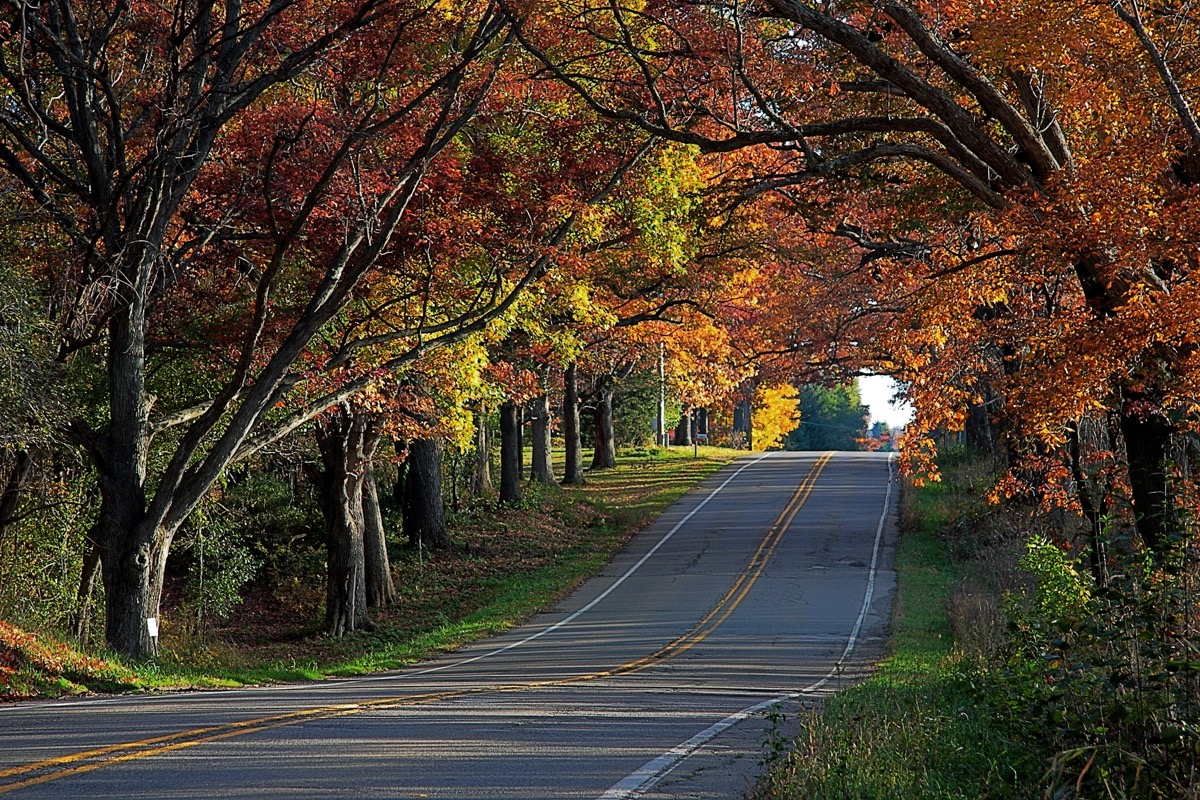If You Live in These States, Brace Yourself for More Copperhead Snakes

If you’ve somehow missed the news—and haven’t seen them with your own eyes—trillions of cicadas have begun emerging from the ground for the first time in 17 years. The cicadas that only come around once every couple of decades are called Brood X, and they may be drawing out some other unwelcome visitors. Yes, it’s not just bugs you need to be on the lookout for. Experts say you might also see an unusual number of copperhead snakes as they come looking for nutrient-packed cicadas to munch on.
RELATED: If You Live in These States, Prepare for a Rat Infestation, Experts Warn.
Matt Evans from the Smithsonian National Zoo told ABC 7 that with so many cicadas for the taking, you may see more copperhead snakes. “It’s a distinct possibility that you might come in contact with [copperhead snakes] more if they’re out gorging themselves on food,” he said. “So I think that it is something that could be different, and why people might see them during the day.”
Entomologist Ryan Smith, a pest control expert, says cicadas are a top-choice snack for many species of snakes, but the Brood X emergence has aligned especially well with the copperhead snake’s mating season. With food at the ready, copperhead snakes can focus on mating.
And that doesn’t just mean you’ll be seeing more snakes in the short-term. “The readily available food source in the spring may cause more copperheads to reproduce than usual, which could lead to a higher amount of young in the fall,” says Ed Spicer, CEO of Pest Strategies.
RELATED: For more up-to-date information, sign up for our daily newsletter.
These snakes are venomous, but their bites are rarely fatal to humans, Spicer notes. Entomologist David Price, technical director at Mosquito Joe, a Neighborly company, says you’re most likely to encounter snakes at night or shortly after a rain when it’s hot and humid. If you do see a copperhead snake, “back up slowly and give the snake some room,” he advises. “They normally only strike if they feel threatened or are hunting.”
Smith says that if you are seeing more copperhead snakes than usual, “you can lay out traps or use a snake repellent to deter these snakes from your yard.” He notes that you should also be prepared for other predators that you might see more of while they’re trying to get in on the cicada feast, including birds, lizards, and squirrels. Price adds that raccoons, opossums, and even your own pets will also try to nibble on the cicada carnage.
Cicadas are set to emerge in 15 U.S. states, so residents should be mindful of the copperhead snakes that might follow. Read on to find out if you live in one of the states that could be dealing with a multitude of pests.
RELATED: If You Live Here, Prepare for a Mosquito Invasion Like You’ve Never Seen.
1
Delaware

2
Georgia

3
Illinois

4
Indiana

5
Kentucky

6
Maryland

7
Michigan

8
New Jersey

9
New York

10
North Carolina

11
Ohio

12
Pennsylvania

13
Tennessee

14
Virginia

15
West Virginia

RELATED: If You See This Bug, You Need to Vacuum It Up Immediately, Experts Say.